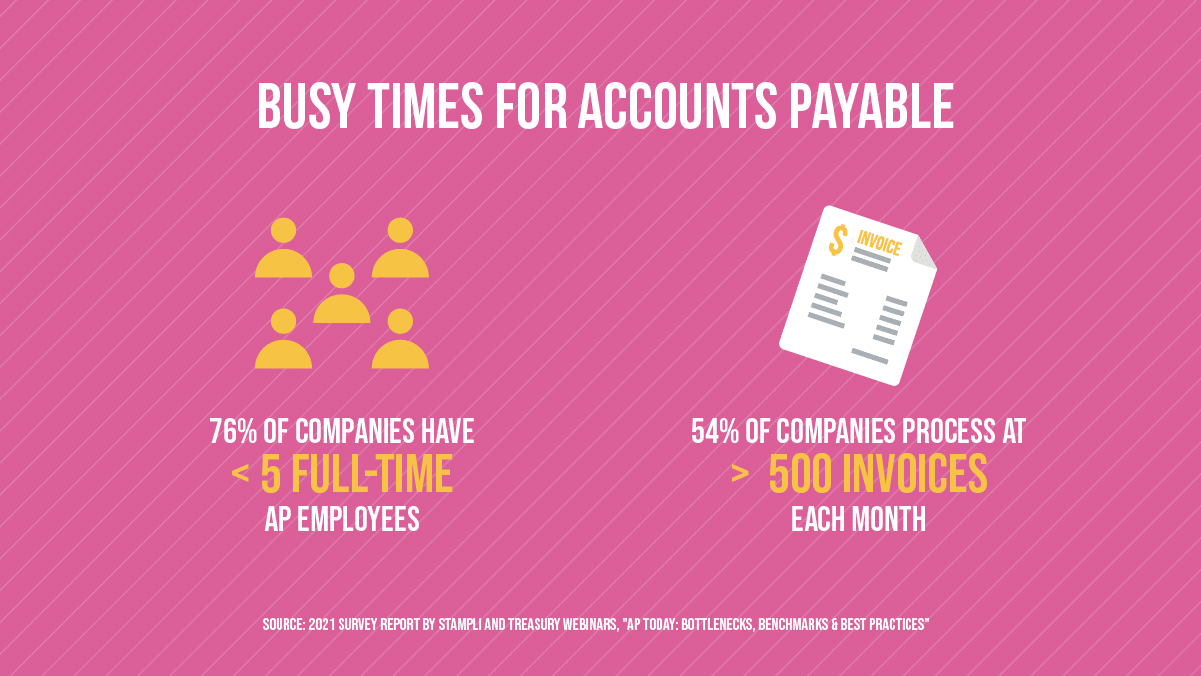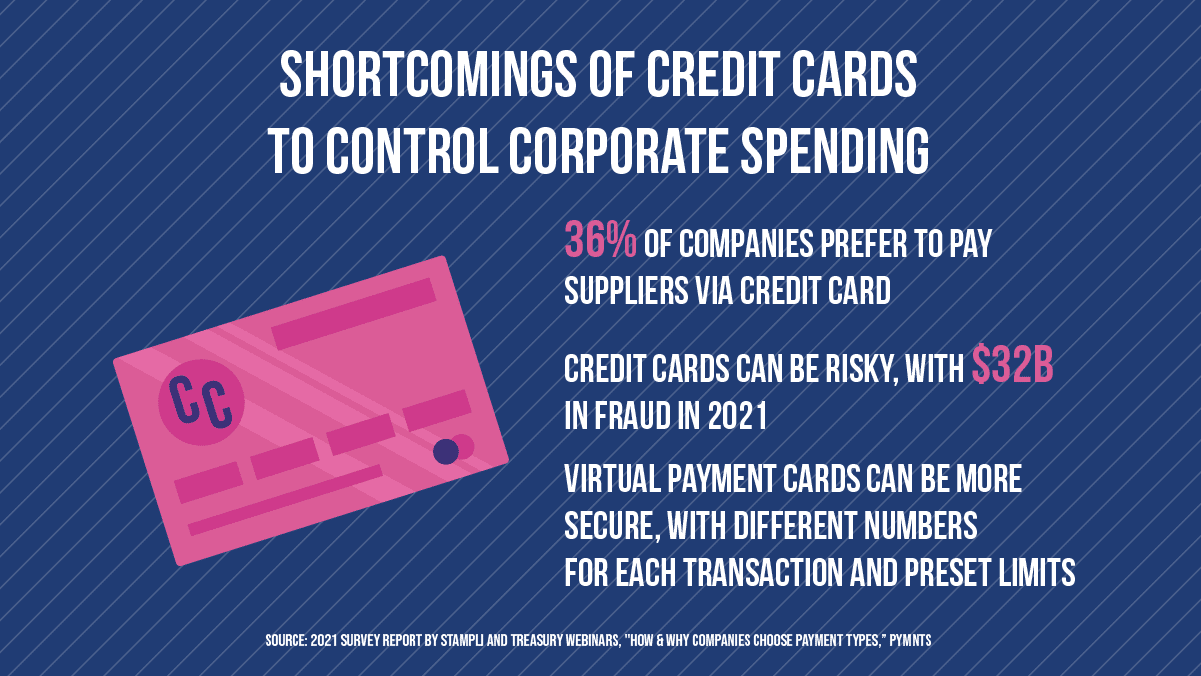Surefire Methods to Reduce Company Costs

It’s no secret economic times are uncertain between soaring inflation, cooling consumer spending, and fears of a possible impending recession. Even in good times, however, it’s wise for businesses to look for ways to reduce company costs.
After all, companies mindful about spend management can benefit from fewer unnecessary expenses, more efficient operations, and increased profitability and cash flow. Minimizing costs in a business is one of the easiest ways to ensure it can continue to meet its financial obligations and stick around through good times and bad.
Today, we’re going to look at the basics of reducing business costs and some strategies to help achieve it, including Stampli Card.
Basics of Reducing Company Costs
When a business spends money, it might seem like the company has little to no control of its expenses and that spending is just a cost of doing business, perhaps.
Truth is, companies are in the drivers’ seat for when and how they spend money and for actions they can take to bolster spend management, which Gartner defines as “a set of practices that ensure organizations make procurement and sourcing decisions in the interests of both the bottom line and company efficiency.”
Let’s look at a few of the basics of cutting costs for businesses:
Why it’s Smart to Reduce Company Costs
Business people might think it’s fine to spend money without thinking, or that any corporate expense is simply a deduction that reduces taxable income.
While it’s true that a deduction can reduce a business’s net taxable income, it’s also true that a business will keep most of the money it doesn’t spend, with the current corporate tax rate 21% federally in America, with an average of just over 6% in U.S. states.
This means that for every $100 of income a business has, it will pay about $27 (21% + 6%) in tax on taxable income . However, assume a business with the same income makes a needless $20 expense to lower its net income:
- A firm will pay tax on ($100 income – $20 expense), or $80
- The tax is ($80 X 27%), or $21.60
- The business pays $41.60 between the needless expense ($20) and state and federal corporate tax ($21.60)
Thus, while it’s smart to deduct every necessary business expense, the best deduction a business can sometimes make is not spending money at all if it doesn’t have to.
Beyond this, companies can be setting themselves up for failure if they operate without a clear understanding of when and how they’re spending money. They can have different internal departments paying wildly different margins for goods or services. A 2021 survey report of 282 accounting and finance professionals by Stampli and Treasury Webinars, “AP Today: Bottlenecks, Benchmarks & Best Practices” found that 38% of companies were letting departments make purchasing decisions on their own. Left unchecked, this can lead to disaster.
Companies that don’t pay close attention to reducing costs can also easily wind up paying for old or expired services or subscriptions. In addition, businesses may leave themselves open to paying for duplicate or fraudulent transactions.
Why Companies Sometimes Fall Short on Reducing Expenses
There can be a number of reasons companies don’t focus as much on cutting costs as they maybe should.

For one thing, accounts payable departments – where the proverbial buck should ideally stop on padded expense reports, frivolous spending, and the like – are busy. Stampli and Treasury Webinars’ report on AP bottlenecks found 76% of respondents were at companies with five or fewer full-time AP employees. That same report found 54% of companies were processing at least 500 invoices each month.
Between everything that goes into processing an invoice, from coding it into an accounting system to approving it for payment to reconciling it with other transactions in a general ledger, AP is a lot of work. And that’s saying nothing of how the work can multiply exponentially when invoice exceptions, which are common, can arise or payment gets delayed and anxious vendors start calling or emailing wondering where their money is.
Simply put, there’s often not enough time for companies to really take a deep look at all of their expenses and know what’s working and what isn’t. The good news: There are a few broad strategies – and a myriad of sub strategies – that can make a big difference in reducing company costs.
The Three Major Ways to Cut Costs
While there are dozens, if not hundreds of micro-strategies businesses can deploy to rein in their spending, they boil down to a few broad categories. They are:
1. Cut Spending
The first way to cut costs is to simply do it. Cut out unnecessary expenditures. Some of the candidates for these types of expenses will be obvious. Seemingly every business has subscriptions it isn’t using, office supply spending it could reduce, and entertainment or travel expenses it could cut back on. The list goes on.

Employee perks can be reduced if it’s things that workers don’t really value, such as premium coffee in the break room or high-end providers. These days a lot of companies are also rethinking how much office space or other corporate real estate they really need, or if lower price or more cost-effective versions exist of a variety of outsourced goods or service providers.
Sometimes, it helps to be a little unconventional as well to cut business costs. Businesses can go the way of a lot of American homes and consider ditching landlines, or doing more calls via free services like Skype or ones with lower costs like VOIP services. Social media marketing can supplant legacy media, even beyond known effective channels such as Facebook to target lower-traffic but effective networks like LinkedIn. Companies can also implement energy efficient light bulbs for cost savings.
Other potentially streamlined expenses might require a bit more digging. They might be unearthed through an internal audit. Or they could be identified with a careful analysis through a company’s AP automation software. This software, which is used for end-to-end invoice processing can wind up keeping detailed, cloud-based records of a company’s spending going back several years. It’s a great tool for zeroing in on how spending is occurring, bookkeeping processes, and even forecasting.
The challenges with this strategy: Cutting spending is not necessarily a problem. In fact, it’s a good practice for everyone from freelancers and small businesses to enterprise-level and Fortune 500 companies. The problem is where businesses might first try to make cuts: Labor costs.
When a company looks to cut spending, it might attempt a hiring freeze, try to fill open positions with below-industry rates, or forego raises. The company might look to force a round of voluntary pay cuts. As more people return to offices during the COVID-19 pandemic, some companies have also been weighing pay cuts for workers who opt to keep telecommuting.
Whatever form pay cuts take, while sometimes legal, they can easily backfire, alienating good employees and potentially even chilling the hiring waters if word gets around. As Inc. noted about the possibility of pay cuts for remote staff, “Cutting pay for existing employees who opt to work from home is a terrible idea and it shows a complete lack of emotional intelligence.”
Preemptively slashing pay without thoroughly vetting other options for reducing costs is also unnecessary. With the right tools, such as AP automation, in place, cutting pay should be the last thing a business considers for bringing down costs.
A potential solution: AP automation software
2. Control Spending to Reduce Overages
Short of cutting spending – which isn’t always possible given contract terms with vendors or the going rates for certain goods and services – a company can try to better control how and when it spends money to keep costs from running high.
Spending control methods can include having better-defined invoice approval procedures. Stampli and Treasury Webinars’ survey report on AP bottlenecks looked at how companies assign invoices. The most popular answer, at 44%, was by department. Some of these companies might be able to reduce spending by centralizing their invoice approvals into an AP automation platform.
Beyond this, companies can put protections in place before spending occurs or invoices can be generated. This can include having competitive bidding policies with vendors or having purchasers get multiple quotes from low-cost leaders for items. Companies can also require extra approvals if purchases are over a certain amount – accounting software is great for this, as it can allow for custom workflows for different purchasing scenarios.
Companies can also regularly review supplier relationships, with another 2021 survey report by Stampli and Treasury Webinars, “Drivers of AP Success: Metrics, Collaboration, Influence” finding that 53% of companies were doing these types of reviews monthly or quarterly. Periodic reviews and upgrades of vendor lists can help weed out managers who might be spurring less-than-ideal spending by companies.
The challenges with this strategy: Certain payment methods are harder to control, particularly credit cards, which were the most-preferred way to pay suppliers. 36% of companies, in another 2021 survey report by Stampli and Treasury Webinars, “How & Why Companies Choose Payment Types”, preferred the use of credit cards.

Credit cards can be harder to control for spending because, unlike virtual or ghost payment cards where a company can create a unique card for every transaction, credit card numbers are static – they don’t change until a new card is issued by a financial institution. Thus, a rogue employee or a fraudster in possession of a company card can run amok if they want. PYMNTS.com recently noted that there was $32 billion of credit fraud in 2021, with that number expected to reach $38.5 billion within six years.
A potential solution: Virtual or ghost payment cards, with preset spending limits and unique numbers for each transaction
3. Invest Now to Save Money Later
Over a long timeline, investing is rarely, if ever a bad idea. For example, the S&P 500, over the past 40 years with dividends reinvested, has averaged a 12.17% return on investment. A $10,000 investment in March 1982 with that rate of annual return would have netted approximately $988,000 by March 2022, through the magic of compound interest.
For a business, investments are often less about purchasing stock or index fund shares than about investing in talented personnel, a piece of technology, or a corporate initiative. But the principle is the same whether in investing or business: Investing sooner rather than later in the right places will, over time, generate a far greater return than just letting the money sit in the bank (even one that pays a competitive interest rate).
The challenges with this strategy: Investments, while potentially lucrative, carry a degree of uncertainty. In fact, the higher the potential reward, the greater the risk might be. Thus, simply investing might not be enough. A business needs tools and technology, such as spend management software, that can provide the data it needs with as much certainty as possible.
A potential solution: Stampli Card comes with a spend management dashboard that provides real-time data. This can help a business know at a moment’s notice where it is committing resources, allowing businesses to assess if these investments are bearing fruit.
How Stampli Card Helps Reduce Company Costs
For businesses that are ready to zero in on their expenses, cutting costs wherever reasonably possible, Stampli Card can be a powerful tool. Here are a few reasons why:
More Controlled Spending
Stampli Card, a virtual payment card, isn’t like credit cards, where there’s no real certainty of when or how often the same numbers will be used for any number of different purchases.
Instead, businesses have unparalleled control each time they create an individual Stampli Card. Companies can dictate the precise amount that can be spent on the card, which can be exactly how much and not a penny over the price agreed to by the vendor and the business. If a vendor tries to charge more, the card simply won’t work for the transaction. It’s a great way for keeping costs to what both parties have agreed they will be in a business transaction.
Real-Time Spend Insights Via Dashboard
Instead of having to slog through a spreadsheet to see accounts payable data, businesses can visualize and gain full visibility into AP data with Stampli Dashboards. These AP dashboards from Stampli provide businesses a holistic view into AP data with three pre-built dashboards and interactive widgets.
With Stampli Dashboards, businesses can measure AP data that matters most at a glance or drill down even further with filters. Last but not least, they can customize AP dashboards to view the right AP data in the moment through an easy-to-use interface.
Fewer Fraudulent Expenses
Payments fraud remains a major problem for businesses, with PYMNTS.com noting that 82% of respondents had experienced fraud attempts in recent times.
When it comes to solutions like Stampli Card, the number of fraud attempts a company might experience can be dramatically lower. With cards able to be created for one-off transactions for authorized users at preset limits, there just won’t be a lot of room for fraud.
It’s all part of Stampli’s efforts to help the businesses they work with get the most out of reducing company costs.
Reduce company costs and enjoy smoother spending with Stampli Card.
